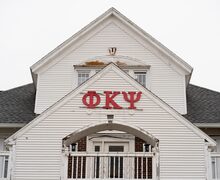Regularly consuming alcohol may put teenage girls at a higher risk for developing benign breast disease in their 20s, according to a recent study conducted by researchers at Harvard University.
“Our main finding was that adolescent girls in high school and college who typically had seven drinks total each week were 50 percent more likely to develop benign breast disease in their late 20s. Also, drinking three or more days per week greatly increased their risk,” said Catherine Berkey, lead researcher and biostatistician at Harvard Medical School.
The study, called the “Growing Up Today Study,” discovered teenage girls who drink heavily are more likely to develop the symptoms of benign breast disease including unusual bumps and cysts in the breast, which are known risk factors for breast cancer, according to the research published in the May issue of Pediatrics.
Through surveys and in-depth interviews, Berkey conducted research with a team of health professionals who initially planned to study the causes of obesity in youth, she said. It was from this research that the team made the discovery of the correlation between alcohol consumption and this precursor of cancer.
The girls, aged 9 to 15, answered questionnaires from 1996 to 2001, and again in 2003, 2005 and 2007, Berkey said. The questions related to their alcohol consumption in the previous year.
In the 2005 and 2007 surveys, the results showed 147 women had been diagnosed with benign breast disease. The correlation between drinking habits and this diagnosis became clear as the research team investigated it further.
The study led the team to believe lowering alcohol consumption among females could prevent some cases of breast cancer and benign breast disease. With the growing number of detected cases, it was clear to the research team that lifestyle choice could greatly affect the amount of women who contracted benign breast disease, Berkey said.
The Harvard University School of Public Health defines binge drinking as five drinks in one sitting for men and four drinks in one sitting for women. Recent data have also shown an increase in the number of young female binge drinkers in the United States. Girls today are four times more likely than their mothers were to begin drinking by age 16, Time magazine reported in its April 1 issue.
The study of the link between drinking patterns and breast disease and cancer is ongoing, Berkey said. Although the study’s findings were among adolescent women, the team’s long-term goal is to eventually study cancer and other diseases among adults, she said.
The research team could not determine whether there is a safe amount of alcohol young girls can drink without a higher risk for developing breast cancer, Berkey said. The ongoing research will eventually lead to a more precise estimation of those risks and their relation to young women.
“As more of these young women develop benign breast disease,” Berkey said, “we can reevaluate these study results as well as investigate other possible causes of BBD and breast cancer.”
Published on April 18, 2010 at 12:00 pm





